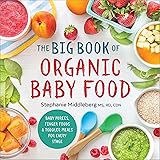Teaching children about the importance of fresh produce, particularly vegetables, is a fundamental step in fostering lifelong healthy eating habits. This enjoyable video offers a fantastic, interactive starting point for young learners to identify various vegetables through song and repetitive actions.
Understanding different types of vegetables, along with their unique characteristics, lays a crucial foundation for a balanced diet. Consequently, parents and educators are consistently seeking engaging methods to introduce these essential foods to children in a positive and memorable way.
The Educational Value of Engaging Vegetable Songs for Kids
Interactive songs provide an excellent pedagogical approach for early childhood education, specifically for teaching children about vegetables. Repetition, rhythm, and visual cues in a format like “The Singing Walrus” video can significantly enhance a child’s vocabulary and recognition skills.
Furthermore, this method transforms learning into an enjoyable activity, which can reduce resistance and cultivate a positive association with healthy foods. Children often absorb information more effectively when it is presented in a playful and multi-sensory manner, making musical lessons particularly impactful.
Exploring Diverse Vegetables for Kids: Beyond the Garden Patch
The video thoughtfully introduces a selection of nine common vegetables, each offering distinct nutritional benefits and culinary versatility. These include carrots, cabbage, broccoli, potatoes, spinach, celery, garlic, onions, and leeks, representing a broad spectrum of flavors and textures.
Therefore, parents have an excellent opportunity to expand upon these examples, teaching children about the various categories and uses of these essential ingredients. Incorporating these specific vegetables into family meals reinforces the learning from the song in a tangible, real-world context.
Carrots, Cabbage, and Broccoli: Nutrient-Rich Choices
Carrots are widely recognized for their vibrant orange hue and high beta-carotene content, which the body converts into Vitamin A. This essential nutrient is vital for good vision and a robust immune system, making carrots a delightful and beneficial snack for growing children.
Cabbage, a leafy green vegetable, provides significant amounts of Vitamin C and Vitamin K, contributing to bone health and overall immunity. Introducing cabbage in various forms, such as shredded in salads or lightly cooked, can help children appreciate its mild yet distinct flavor profile.
Broccoli is often hailed as a “superfood” due to its rich composition of vitamins C and K, fiber, and various antioxidants. Its tree-like appearance can also make it a fun and interesting vegetable for children to explore on their plates.
Potatoes, Spinach, and Celery: Everyday Essentials
Potatoes, a starchy vegetable, serve as a valuable source of energy, dietary fiber, and Vitamin C, contributing significantly to a child’s daily nutritional intake. They are incredibly versatile and can be prepared in numerous healthy ways, from baking to mashing, appealing to diverse tastes.
Spinach is a powerhouse of iron, calcium, and Vitamins A and K, crucial for strong bones and healthy blood. Incorporating spinach into smoothies or pasta sauces can be an effective strategy for children who may be hesitant to eat leafy greens directly.
Celery offers a refreshing crunch and provides important antioxidants and fiber, supporting digestive health. This vegetable can be served with dips or added to various dishes, introducing children to its unique texture and mild, earthy taste.
Garlic, Onion, and Leek: Flavorful Foundations
Garlic, while often used as a flavoring agent rather than a main dish, possesses notable immune-boosting properties and adds depth to countless meals. Even small amounts can introduce children to complex flavors, expanding their palates over time.
Onions are fundamental to many cuisines globally, offering a wealth of antioxidants and contributing a savory base to soups, stews, and stir-fries. Exposure to these foundational ingredients helps children understand how different vegetables contribute to the overall taste of food.
Leeks, related to onions and garlic, have a milder, sweeter flavor profile and are rich in vitamins K and A. They can be gently sautéed and incorporated into mashed potatoes or quiches, providing a gentle introduction to more nuanced vegetable flavors for children.
Cultivating Healthy Eating Habits: Practical Strategies for Parents
Beyond singing about vegetables for kids, parents can implement several practical strategies to encourage consumption and foster a positive relationship with healthy eating. Consistency and creativity are key components in this important journey toward optimal childhood nutrition.
Firstly, involve children in the food preparation process; even simple tasks like washing vegetables or stirring can create ownership and excitement. When children participate in creating meals, they are often more inclined to taste and enjoy the food they helped prepare, thereby promoting healthy eating for children.
Secondly, offering vegetables in various forms and preparations can help overcome picky eating tendencies. For example, broccoli might be rejected steamed but enjoyed roasted with a sprinkle of cheese, demonstrating flexibility in presentation is important. Thirdly, consistent exposure to a wide variety of fresh produce helps normalize their presence in meals.
Furthermore, leading by example is incredibly powerful; children are more likely to eat vegetables if they see their parents enjoying them. Sharing family meals that prominently feature a colorful array of produce communicates the value of a diverse and nutrient-rich diet.
Lastly, it is important to avoid pressuring children to eat specific foods, as this can create negative associations with mealtime. Instead, offer choices and maintain a relaxed, positive environment around food, emphasizing exploration and enjoyment rather than strict consumption targets.











